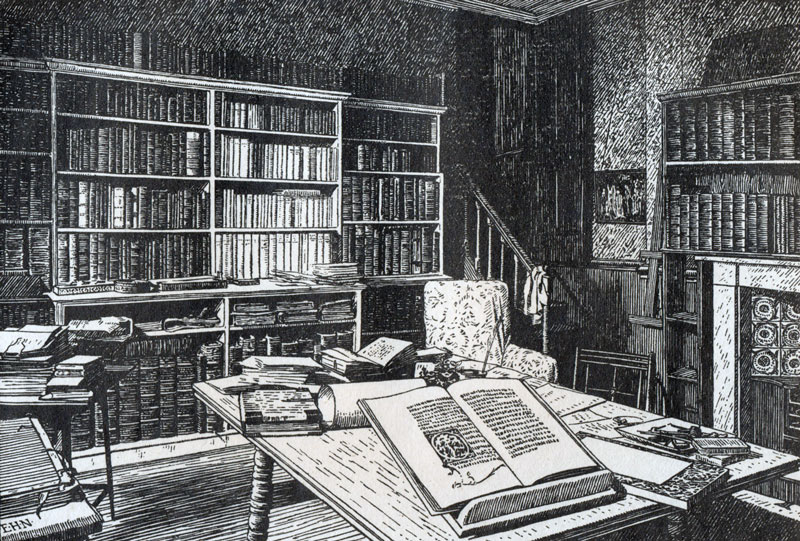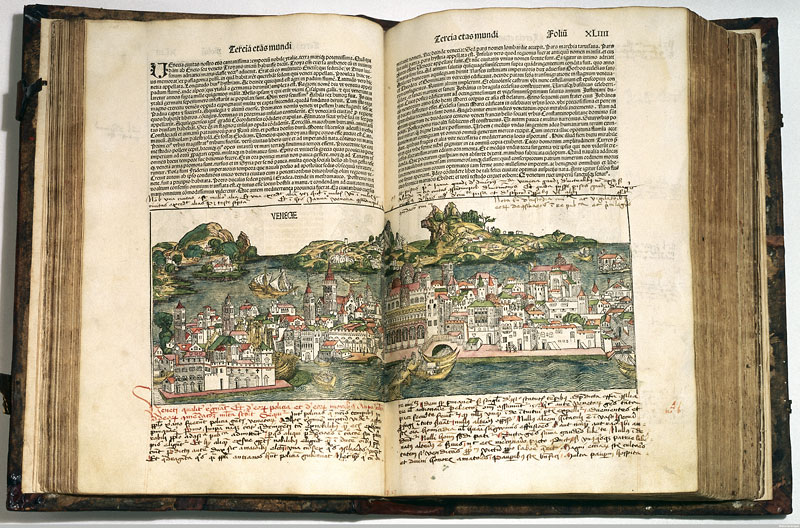Reassembling William Morris’ Library
Two scholars are digitally recreating the book collection of the Kelmscott Press founder By Meganne Fabrega Meganne Fabrega is a freelance writer and a member of the National Book Critics Circle. She is currently researching the lives of children’s author Amy Ella Blanchard and her lifelong friend, artist and illustrator Ida Waugh.

Even for Victorian dreamer, designer, artist, poet, publisher, and writer William Morris (1834-1896), the thought of his personal library being accessible around the world would have been a stretch. Luckily Sylvia Holton Peterson and William Peterson, both retired professors and authors in their own right, have taken on the task of bringing Morris’ enviable book collection together again: at least in a digital format known as The Library of William Morris—A Catalogue at williammorrislibrary.wordpress.com.
After the Petersons’ initial success, or as William calls it, their “dry run,” with the blog they created to complement their book, The Kelmscott Chaucer: A Census (Oak Knoll Press, 2011), they decided to take their passion for Morris’ life and work a step further.
“Both of us have an interest in William Morris and the Kelmscott Press, and so much has been written through the years about Morris as an artist, printer, and bibliophile that it seemed like an obvious project,” said William. “Initially we envisioned a book, but as we began to gather information, we realized that it really ought to become a digital publication. On our website we can continue to add new information, make corrections, and provide additional links as often as we want to; with a book, we would probably have to wait a decade or more to publish a second edition.”
Morris himself could not have found a better pair than the Petersons to recreate his beloved collection. William has mined his extensive experience in the study of late nineteenth- and early twentieth-century English and American fine printing to write two books about the Kelmscott Press, while Sylvia was co-compiler with Jackson Boswell of Chaucer’s Fame in England: STC Chauceriana 1475–1640 (Modern Language Association, 2004). The Petersons are currently working on a book about the Daniel Press, an early adapter of the private press in nineteenth-century Britain.
The thought of reconstructing such a prestigious collection is overwhelming, but the Petersons are approaching it one book at a time and aim to compile at least 2,000 entries. (They recently reached the half-way point.) “Of course we hope also to enlarge and improve the list in various ways even after we reach the magic 2,000 mark,” William said. “We have been slightly surprised by the complexities of the material, and in writing the entries for the website we have to work slowly and deliberately to avoid errors, and then of course we also have to wrestle with ambiguous categories.”
Sylvia and William are meticulous with their entries, using a multitude of tags and links in order to help the user narrow his search of titles from the thirteenth to the nineteenth century. In addition to title and author information, many entries include provenance, reference information, a link to the digital version, and a clipping from the December 1898 Sotheby’s sale catalogue when available. The digital format not only improves accessibility for the project, it also fosters relationships between the Petersons and other Morris devotees.
“One of the advantages of doing a project like this on the web rather than in a book is that you get a remarkable amount of feedback. We have a steady stream of visitors to our site every day, often from very distant parts of the globe. And we’ve had helpful communications from many librarians and collectors who have supplied missing bits of information or reported on the present whereabouts of books that Morris once had on his shelves.”
The Petersons consider the study of this great collector part of their life’s work, but do they collect anything themselves? Sylvia said, “I try not to collect, but cookbooks are my weakness. Mostly they are well used, so their condition would horrify a serious collector.” William’s own collection includes a particularly treasured title that Morris most certainly would have approved of: the 1893 Kelmscott Press edition of his lecture, Gothic Architecture.








